.
Ruins of fire-swept building at 4600 South Paulina Street, 16 January 1949
Taking things that don't belong together, pluralistic
futures, simplistic pasts, hoop
dreams, screened-in porches, perfume of flowers
hanging on the night, x-rays, bermudas
memory spies, shadow architectures
spilt down hallways toward
a stair, or door, concealing
a clock ticking away inside the soft skull
of the child not yet born
Photos of Chicago in the 1940s by Charles W. Cushman from Charles W. Cushman Photograph Collection, Indiana University Archives
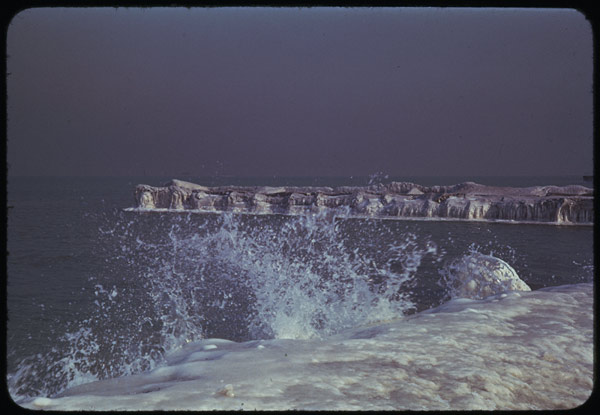
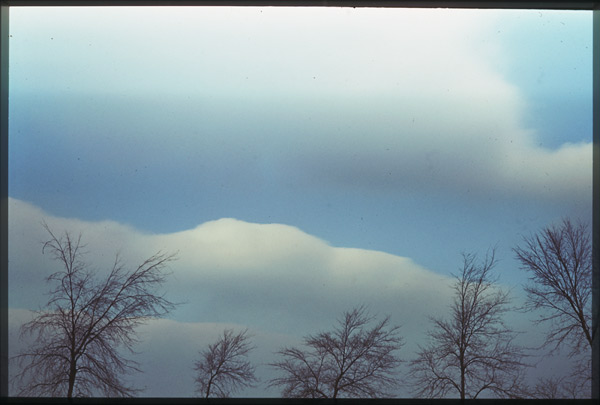
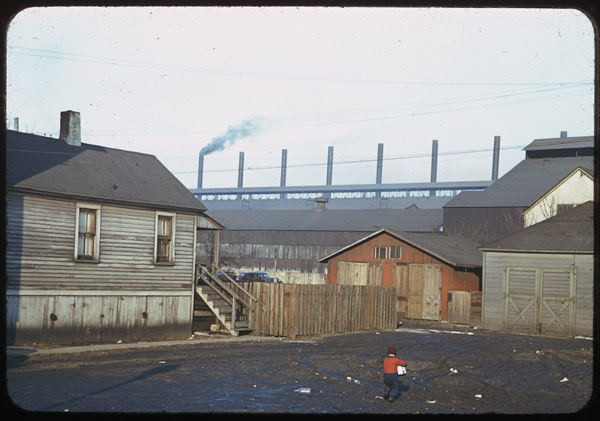
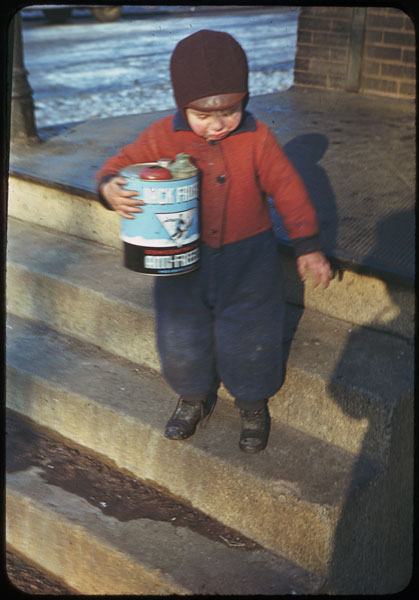
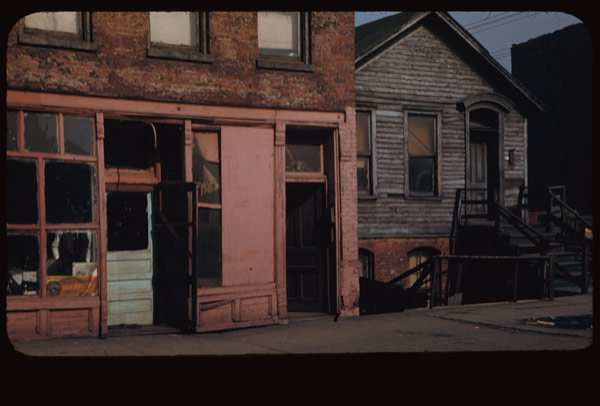
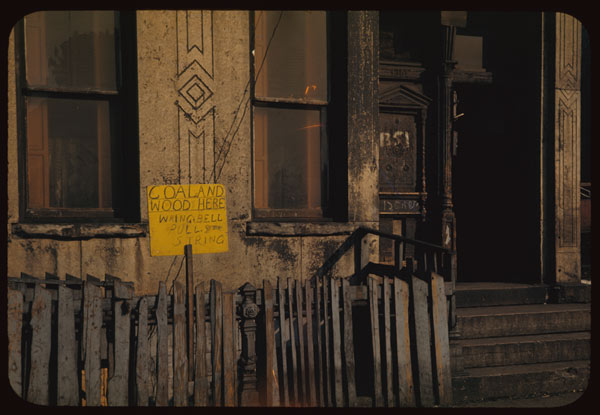
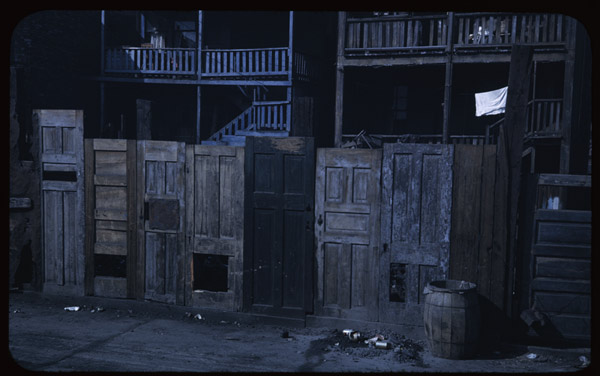
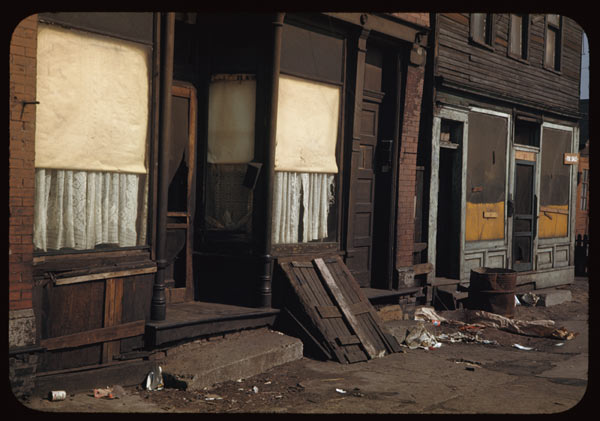
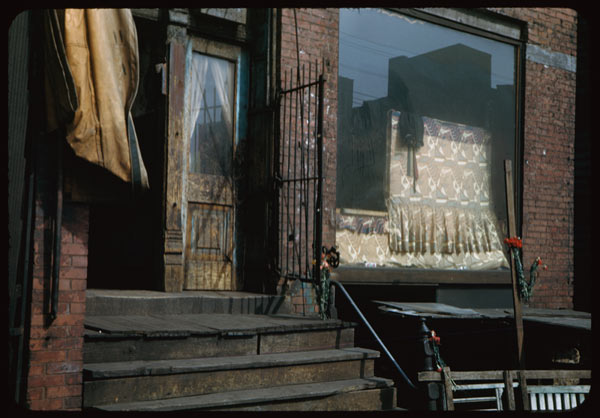



6 comments:
I love this post. Haunting.
The different kinds of time that seem to bookend the other items - a very plain tick tock in the soft skull and the past and future done up wrong by stupid people.
And the photos: people living in the bones of a store; a patchwork of doors
Pluralist futures and simplistic past. Hanging in the present between, like a series of X-rays on a wall. Someone's life. An exhibition of X-rays. What's going on inside that skull, one word, one snapshot, 1969. The author's foreword, am I the author of my past.
I too have been haunted by these photos.
Charles Cushman, a privately-wealthy untrained amateur photographer, spent the better part of thirty years traveling the world and documenting his ramblings with his Contax IIA camera. When he died in 1972, Cushman left a collection of 14,500 slides, most of them in Kodachrome, to his alma mater, Indiana University.
The place Cushman knew best was Chicago, where he and his wife Jean lived from 1938 to 1952.
Many of the buildings Cushman photographed (including all of those seen here) no longer exist, swept away by successive waves of urban redevelopment.
His files thus remain the principal visual record of what the city once looked like.
Taken together, they also represent a significant testament to the role of Kodachrome in rendering American historical reality -- what photographic photography A. D. Coleman has called "slices of the real".
"Monochrome photographs ... whether black and white or sepia toned or cyanotype, inherently signal to us -- by the very absence of full color in their representation of the world -- that they're abstractions, derivations, or something other than the situations, objects, and spaces they depict. By eliminating obvious evidence of the transformative function of photography and giving us a world that more effectively replicates the one we see with our own eyes, color photography makes the medium that much more transparent, credible, and effectively illusory: more tactile, more sensory, more persuasive; less like reports about reality and more like actual slices of the real."
A. D. Coleman, in Kodachrome: The American Invention of Our World, 1939-1959, ed. Els Rijper, 2002
The story of how this remarkable photo archive came about is a very interesting one, with elements of mystery that linger on. You can read about it here:
“The Day in Its Color”: Charles and Jean Cushman: Eric Sandweiss, Journal of American History, 94 (June 2007)
I've now looked at all of the Chicago photos in the Cushman archive. Those I've selected to post here are a few that have particular personal resonance for me. I once knew some of these locations. Two of the photos were taken on the day after my birth, in this same city.
memory spies, shadow architectures
spilt down hallways toward
a stair, or door, concealing
a clock ticking away inside the soft skull
of the child not yet born
(Must be the fevers -- comments made me think of this. Only off by a year. What's in a two-dimensional lifetime?)
Tom,
That bundled-up moppet going down those steps with gallon of Jack Frost Anti Freeze (?) then walking across empty cold space below smokestacks against cold grey sky -- all in Kodachrome, says it all. . .
6.12
light coming into sky above still black
ridge, shadowed bird chirping on branch
in foreground, sound of wave in channel
thing corresponding to that,
completion of thought
not being it, looking which
could begin, now that
grey white of fog against top of ridge,
cormorant flapping across toward point
Post a Comment